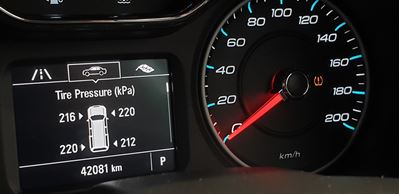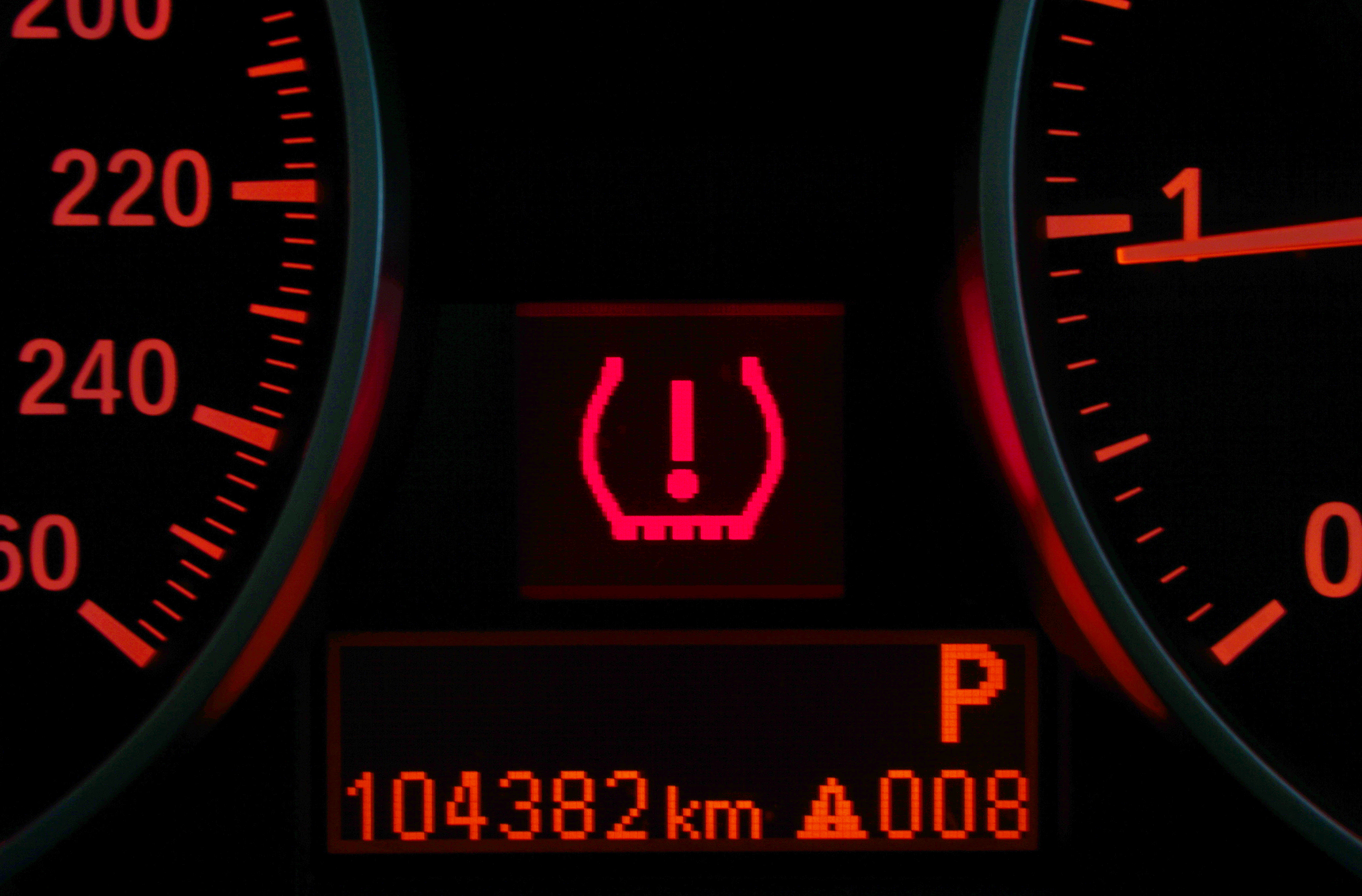Changing your zip code will clear your Pre-Approval.
Zip / postal code is required.
Where To Find the TPMS Reset Button on Your Vehicle

The dashboards of modern cars come equipped with a few dozen symbols. Whenever they light up, that means that your car is trying to communicate with you.
These notifications provide you with a wide range of information. Some of them are just simple reminders (the high beams of your headlights are on). Others are letting you know you’ll need to take action soon (the gas tank is almost empty). A few of them will let you know that there is an emergency that requires immediate action (the engine is overheating).
One of the most important dashboard notifications is the Tire Pressure Monitoring System. Whenever you see this light turn on, it means that one or more of your tires is running low on air pressure. You normally don’t need to pull over immediately, but you’ll need to address the situation soon.

What Is the Tire Pressure Monitoring System?
The Tire Pressure Monitoring System, TPMS for short, is designed to tell you whenever your tire pressure is low. Tire pressure is often taken for granted and most drivers rarely check it. Honestly, when was the last time that you checked your tires? The TPMS helps drivers to keep their tires properly inflated.
The earliest version of the TPMS first appeared in European luxury cars back in the 1980s. The 1986 Porsche 959 was the first passenger car to include the system. It would take a few years before the system made its way to the United States. General Motors first used TPMS in conjunction with run-flat tires on the 1991 Chevrolet Corvette.
The TPMS was found exclusively on luxury cars until the early 2000s. In the late 1990s, more than 100 deaths were attributed to tread separation. These deaths triggered two monumental events: the infamous Firestone tire recall and the TREAD Act.
In September 2000, the Transportation Recall, Enhancement, Accountability, and Documentation (TREAD) Act was pushed through Congress in less than 18 hours and signed into law by President Bill Clinton. One of the most significant mandates in this bill was the requirement of a suitable TPMS in all newly manufactured motor vehicles under 10,000 pounds.
The mandate officially went into effect in October 2005 and reached 100% compliance on September 1, 2007. The European Union was a little slower to adopt similar legislation but reached the same compliance levels on November 1, 2012.
Why Is the TPMS So Important?
The TPMS warning light isn’t indicative of an emergency like some of the other lights in your dash. However, that doesn’t mean that it should be ignored or taken lightly. Driving around on underinflated tires is very dangerous. That’s why the TREAD Act forced car manufacturers to install it on every model.
Having one or more underinflated tires can lead to:
-
Poor handling. Underinflated tires will reduce the amount of control that you have as you drive. You’ll have a harder time trying to stop your car, complete a turn, handle curves, or take evasive maneuvers to avoid a hazard.
-
Tire failure. Only a certain part of the tire is supposed to make contact with the pavement. Underinflated tires will increase the parts of the tire that touch the road, causing more friction and overheating. The tread and sidewalls of your tires will wear down faster and the odds of experiencing a blowout will greatly increase.
-
Vehicle damage. Having underinflated tires will put a greater amount of pressure on the suspension and chassis. The excessive strain on these parts can lead to severe damage. There will also be additional stress put on the brake line, calipers, rotors, and wheels.
-
Lower gas mileage. It takes more power to successfully rotate an underinflated tire. Generating more power will require more combustion which requires more gas. Lowering your average miles per gallon by a few tenths can quickly add up at the pump.
What Are the Different Types of TPMS?
Not all cars have the same type of TPMS. The goal of each system is the same, but the methods are a little different.
These are the two different types of TPMS:
-
Direct TPMS uses sensors that are attached to the pressure valve or tire rim. The information is collected and sent to the onboard computer. Direct TPMS is most commonly found in American cars and is the most likely to malfunction due to bad weather.
-
Indirect TPMS uses sensors that are attached to the brakes but can use those attached to the wheels. Technically, the air pressure isn’t measured with indirect TPMS. Instead, the sensors measure the wheel rotation speed and compare it to the speed of regularly inflated tires. Indirect TPMS are most commonly found in European cars.
What Does It Mean When the TPMS Light Is On?
The light of your TPMS can turn on whenever you first start up your car or after you’ve been driving around for a while.
If the notification light comes on and stays on, it usually means one of two things:
-
There’s been a significant change in the temperature. Most tires require between 32 and 35 PSI of air when it’s cold. When the temperature outside suddenly drops, it can cause a similar drop in your tire pressure. Refilling the tires with enough air to reach the recommended PSI should be enough to turn off the TPMS light.
-
One or more of your tires is leaking. If there has been no sudden temperature change, the loss of air pressure is most likely from a leak. Refilling the tire with air will only keep it properly inflated for a short amount of time. You’ll need to either patch the tire or replace it entirely.
If the notification light is flashing, then it can be a little bit of a headache to fix. The TPMS relies on pressure sensors to work. Depending on the type of TPMS that you have, these sensors can be located on your wheels or brakes. These sensors are battery-powered and connect to the onboard computer in your car.
Whenever the TPMS light is flashing, it means that a battery has died or the sensor has been damaged. The batteries in your sensors aren’t attached to your car battery and usually run out after a few years.
Tire sensors are typically well protected but can be damaged when replacing a tire, repairing brakes, or changing the oil. Resetting the TPMS light may be able to help, but you might need to visit a mechanic.
How Do You Reset the TPMS Light?
The TPMS light should turn off whenever you’ve filled up your tires with enough air. If the light is still on, you should manually check the pressure in each tire. If the readings suggest your tires are properly inflated, these are a few methods to reset it:
-
Accelerate to 50 MPH or higher and drive around for about 10 minutes. The sensors in your tires should be reset and the light should turn off. If not, park your car and turn off the engine. The light should be off whenever you start up your car.
-
Turn your key to the “on” position, without starting your car. The TPMS light on your dashboard should light up. Press the TPMS reset button and hold it until the light blinks three separate times. Release the button and start your car. You’ll need to let it run for about 20 minutes, but the light should turn off as you drive or the next time that you start it.
-
Disconnect the positive battery cable. Turn the key to the “on” position again and honk the horn for three to five seconds. That should discharge any of the remaining power stored in your car and reset the sensor batteries. Reconnect the battery and start your car. The TPMS light shouldn’t come on.
-
Overinflate your tires with three PSI before completely deflating them. When all four tires have been deflated, wait about five minutes and refill them. The next time you start your car, the TPMS light should stay off. This method is a little bit of a long shot and you should only try it as a last resort. If the light is still on, then it’s probably due to a faulty tire pressure sensor or dead battery. You’ll probably need to enlist the help of a mechanic to fix this issue.
Where Is the TPMS Reset Button Located?
Trying to find the TPMS reset button can be a bit tricky. If you look in your owner’s manual, it should tell you exactly where the button is located.
In most cases, the button will be found on the farthest left side panel, just underneath the A/C vent. It can also be installed on the steering wheel, dashboard, near the gear shifter, the area near the pedals, or in the glove box.
Newer models usually don’t come with a physical reset button. You would have to access the “Settings” menu in your center console. There should be an option for testing, calibrating, or resetting the TPMS.
Don’t Ignore Your TPMS
Ignoring your TPMS notification is a risky move and can lead to severe consequences. If the light comes on, you should investigate the air pressure of your tires as soon as you can. It’s possible that the light might have been triggered in error. In that case, following the above steps should take care of it. But if you have an air leak in one or more of your tires, you should replace them immediately.
Visiting Rent A Wheel will provide you with a ton of options for tire replacement. You’ll have the option to buy a single tire or an entire set of four. The best part is Rent A Wheel offers a flexible payment plan and free shipping so you can save some money. With savings like that, there is no excuse for ignoring your TPMS any longer.
Sources:
The Proper Way to Diagnose and Reset TPMS Systems | Tire Review Magazine
How Do I Find the Correct Tire Pressure for My Car? | Cars
TPMS Basics: Types of Tools and Sensors Explained | Tire Review Magazine
Tire Pressure Warning Light Came On | Consumer Reports
Implementation of the TREAD Act | NHTSA
Servicing Tire Pressure Monitoring Systems | Motor
What Are Your Dashboard Lights Telling You? | AAA